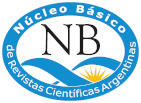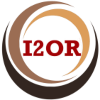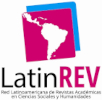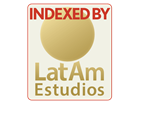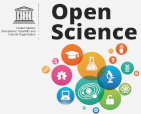Evaluation policies
Evaluation Policies
and Recommendations for Reviewers
In Artilugio, each submitted work is subject to an external peer review process in order to ensure the quality of the contents. Articles under the sections “Reflexiones/Artículos” and “Dossier” are subject to a double-blind peer review process that guarantees anonymity between authors and reviewers. Our Editorial Board ensures confidentiality between the parties is maintained. Works under the section “Indeterminación” are subject to a single-blind review process. More information is available in Peer review process.
To ensure Artilugio’s editorial process complies with the international standards used by academic journals, reviewers must take into account the following guidelines:
- Reviewers must peer-review manuscripts on a voluntary basis and ensure they are suitable to assess works related to their specialty and qualifications. If you believe that you are not sufficiently qualified to assess the topic covered by a certain work, you must notify this to the Editorial Board after reading the abstract and before the full text is sent to you. Likewise, you must also notify the editors of any conflict of interest that might impede an impartial evaluation (collaboration, rivalry, or any sort of relationship with the authors, the institutions the authors are affiliated with, or the institutions that have made financial contributions to a project).
- Reviews must be critical, honest, and morally acceptable. They must be presented in a respectful tone free of personal opinions and judgments and provide constructive criticism in order to help the author(s) improve their works. If applicable, it is also important for reviewers to identify and provide relevant publications that have not been incorporated as citing references and that should be included in the work.
- Reviewers must always respect the anonymity granted by blind review processes and must avoid finding out about the identity of the author(s) in order to eliminate bias either against or in favor of a certain work. Likewise, it is important to maintain confidentiality during the review process and, especially, concerning the works under assessment. In this regard, it is forbidden to make use of or disclose the data, theories, or any type of information included in the works that are being evaluated until they have been published.
- If the reviewers become aware that the authors have committed any fraud, have already published considerable parts of the work under assessment, or have committed plagiarism or self-plagiarism (i.e., any substantial similarity between the work under assessment and other published work), they must confidentially raise these concerns to the Editorial Board and avoid sharing this information with other people.
- After evaluation, reviewers must reach a verdict based on the evaluation form they are given. This verdict might be accepted, accepted (with modifications), or not accepted.
- Reviewers must respect the deadlines established by the Editorial Board. If they need a deadline extension, they must contact the editor to see if it is doable.
- Evaluation is carried out on an ad honorem basis. It is expected that this duty is fulfilled as a deal of academic reciprocity aimed at constructively enhancing and supporting scientific research and the contributions made by other colleagues in the artistic field.
- Finally, it is crucial that reviewers have read and accepted Artilugio’s Code of Ethics.
Academic Criteria
Reviewers should be mindful that submitted works must be original and unpublished and must be related to any field of study related to the arts. Reviewers must bear in mind the following academic criteria for evaluating:
- conceptual clarity and formal and methodological coherence;
- ability to summarize, writing skills, and specialized terminology;
- the singular approach adopted towards the journal’s scope and the central theme proposed for each issue;
- ethical standards in the information and data disseminated;
- relevance of the review topic, reflections, processes, and proposals in relation to the current subjects of debates being held within the artistic field of the submitted work.
Reviewers must follow the steps indicated in the evaluation form and fill in all the necessary information, including their personal information. At a later stage, they must send the sheet, including the final decision, to the editor.
It is important to bear in mind that the comments made in the evaluation form might be communicated to the author(s) without disclosing the identity of the source.
If the reviewers become aware of any misconduct -unethical practices, plagiarism, self-plagiarism, or any type of fraud that infringes the Code of Ethics-, they must notify this to the Editorial Board, which will follow the corresponding procedures to handle and resolve the conflict.
_______________________
EVALUATION FORM
SECTIONS: “REFLEXIONES” AND “DOSSIER”
Please, fill in the following form carefully. If necessary, your comments will be sent to the author(s) of the manuscript to help them enhance their work (your name will remain anonymous).
Manuscript Title: ____________________________________________
A- EVALUATION
To assess this manuscript, please bare in mind the following criteria: the relevance of the research problem and the bibliography; the adequacy of the title, the abstract, the keywords, and the terminology; compliance with the journal's editorial guidelines, and the development and acceptability of the theme and methods presented.
The following questions are offered as a guide to evaluate the manuscript, provide details about its relevant aspects, request for modifications, or explain the reasons for rejection. These comments will provide the author(s) with tools to understand the assessment of their work.
1- Relevance and originality of the research problem
Is the research problem relevant to the central theme proposed by the journal in this issue? Does the research problem represent a significant contribution to the central theme? Does the manuscript present general or specific approaches? If the answer to any of these questions is “no”, indicate why.
Does the article represent a significant contribution to the problems and debates being currently addressed within the artistic field it belongs to? If not, indicate why.
2- Formal Structure
Does the article meet the criteria outlined in the Author Guidelines? If not, indicate why.
Does the article meet the writing requirements? Is it well-organized and coherent? Does it include an adequate bibliography (academic, essayistic, and informational texts related to the arts)?
Is the title clear and adequate to the content of the article?
Does the abstract clearly reflect the content of the article? If not, indicate why.
Do the keywords describe the main content of the article?
2- Theoretical, methodological, and questioning approach
Introduction. Which is the purpose of the article? Does the introduction mention this purpose and clearly indicate the research problem, the theoretical framework, and the research objectives? Does the introduction examine the purpose of the article taking into account other scientific studies? If the answer to any of these questions is “no”, indicate why.
Development. Does it present a coherent conceptual structure? Does it adequately present the contents outlined in the abstract and the introduction? Does it produce results that are presented in a clear and logical way? If the answer to any of these questions is “no”, indicate why.
Conclusion/Discussion. Are the conclusions strong? Does the article indicate how the conclusions are related to the research problem and to prior studies? Does the article support or contradict previous theories? Does the article explain in this section its contribution to its field of study?
References. Are the references and bibliography relevant, up-to-date, and sufficient? If not, indicate why.
B- GENERAL REMARKS
Please include here any recommendations or suggestions author(s) should adopt to enhance their work.
C- POSSIBLE ETHICAL MISCONDUCT
If you believe this article includes any type of ethical wrongdoing, fraud, plagiarism, or self-plagiarism (see Plagiarism Policy) that infringes Artilugio’s Code of Ethics, please indicate, describe, and explain such misconduct here. This situation will be assessed and investigated by the Editorial Board, which will follow the procedures expressed by the Committee on Publication Ethics (COPE).
D- VERDICT
Please mark an X with your final decision:
- ___ ACCEPTED. This article is ready for publication. Only minor technical and stylistic modifications, which are common to any editing process, should be made.
- ___ ACCEPTED WITH MODIFICATIONS. This article may be published after it is reviewed and corrected by the author(s), who should bear in mind the comments made by the reviewers.
- ___ REJECTED. This article must be rejected because it contains major issues or does not meet the requirements or evaluation criteria.
E- REVIEWER
This information will not be sent to the author(s).
- Name and last name:
- Place of residence (city and country):
- Last degree level and institution:
- Institutional affiliation:
- Current job and any other important information:
_______________________
EVALUATION FORM
SECTIONS: “INDETERMINACIÓN”
Please, fill in the following form carefully. If necessary, your comments will be sent to the author(s) of this production to help them enhance their work (your name will remain anonymous).
Title of the Artistic Production: ____________________________________________
A- EVALUATION
The following questions are offered as a guide to evaluate the artistic production, provide details about its relevant aspects, request for modifications, or explain the reasons for rejection. These comments will provide the author(s) with tools to understand the assessment of their work.
1 - Formal, conceptual and aesthetic coherence
Coherent articulation between the explanatory text, the images, and the written, audiovisual, or sound elements:
Does the text help in the understanding of the artistic production? Does the text account for the context in which the artistic production is immersed in and for its processual or conceptual development?
Do the images and the written, audiovisual, or sound elements account for a processual or conceptual development? Do they possess formal and aesthetic coherence?
2 - Contributions made to the arts
Does this artistic production present novel contributions to the problems and debates being currently addressed within the artistic field this work belongs to?
3 - Unique approach adopted in relation to the central theme proposed for this issue
Is this artistic production relevant to the central theme proposed by the journal? Does it make a contribution to it? Does it present a general or a specific approach to the central theme?
B- POSSIBLE ETHICAL MISCONDUCT
The artistic productions must have been primarily carried out for publication in this issue of Artilugio. Otherwise, they must be unpublished (previously published productions or productions under evaluation in other journals are not accepted). If the production has been previously presented in exhibitions or in artistic or academic meetings, the author(s) must provide information on these exhibitions or meetings.
C- VERDICT
Please mark an X with your final decision:
- ___ ACCEPTED. This work is ready for publication. Only minor technical and stylistic modifications, which are common to any editing process, should be made.
- ___ REJECTED. This article must be rejected because it contains major issues or does not meet the requirements or evaluation criteria.
E- REVIEWER
This information will not be sent to the author(s).
- Name and last name:
- Place of residence (city and country):
- Last degree level and institution:
- Institutional affiliation:
- Current job and any other important information:



